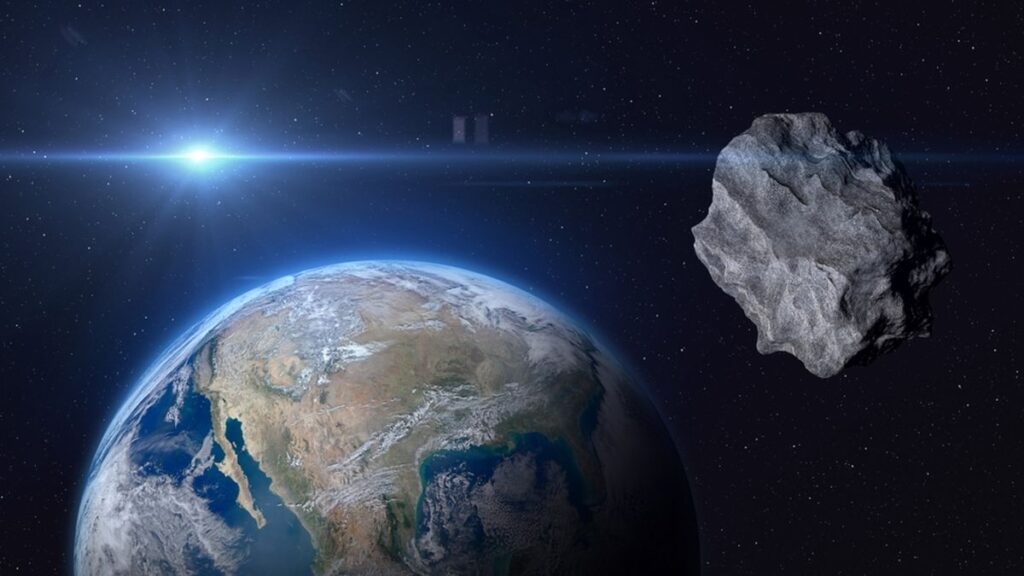
Last week, NASA’s Jet Propulsion Laboratory spotted a giant “city killer” asteroid hurtling toward Earth. It reached its closest approach to our planet in the afternoon, about 1.77 million miles away.
For reference, the moon is about 239,000 miles from Earth. This means that this asteroid will be 7.4 times as far from Earth as the moon is. The large space rock zipped along at about 41,000 mph and measured roughly 890 feet across. That’s roughly the size of a US football stadium, according to NASA.
Experts sometimes call asteroids as big as these “city killers.” This is because they’re capable of destroying an entire city if they collide with an inhabited part of Earth.
Unfortunately, despite its size, the asteroid was too small and far away to see without a telescope. It will be about 10,000 times fainter than the faintest stars visible to the naked eye, Gianluca Masi, an astrophysicist and the scientific director of the Virtual Telescope Project, said before the phenomenon.
ALSO READ: Nikki Haley Blasts Trump for Trying to Blow Up Congressional Border Deal
If you want to catch a glimpse of the asteroid whizzing by, Masi and his colleagues have made that possible. They recorded the event, which started at 1 p.m. ET, and you can watch the livestream on YouTube.
The livestream tracked Asteroid 2008 OS7 as it flew by Earth. Viewers were able to distinguish it as a tiny dot moving past other fixed tiny dots, aka stars, in the background. The whole livestream lasts about 45 minutes, Masi said.
VTP has recorded other flybys like this, and it’s “something always very fascinating to see,” Masi said. Asteroid 2008 OS7 orbits the sun every 962 days. After passing by Earth, it will continue along its oval-shaped path through the solar system.
POLL—Is Climate Change a Major Threat That Requires Immediate Policy Action?
Since it has an oblong-shaped orbit, each time the asteroid approaches Earth, its distance from our planet varies significantly. For example, the website Space Reference estimates that upon its next close approach, in July 2037, it will be about 9.7 million miles from Earth.
Asteroid 2008 OS7 is what NASA calls a “potentially hazardous” asteroid because of its size and how close it zooms past Earth. Experts say an asteroid is potentially hazardous if it is at least 460 feet in diameter and orbits Earth within a distance of about 4.65 million miles.
Scientists have identified more than 34,000 near-Earth objects. Among them, just over 2,300 are potentially hazardous. However NASA suspects there are many more out there that are yet to be discovered. If a giant asteroid were headed for Earth, we’d need five to 10 years of warning to destroy or deflect it.
ALSO READ: FBI Returns Painting Stolen By Mobsters Over 50 Years Ago to Rightful Owner
NASA’s Jet Propulsion Laboratory is currently working on the Near-Earth Object Surveyor mission, set to launch in September 2027. It would send an infrared space telescope into Earth’s orbit to aid NASA’s search for near-Earth objects that could threaten our planet.
You Might Also Like:
Experts Kick Against Biden’s Gaza Strategy, Say It’s an Illogical Disaster
House GOP Subpoenas DA Who Charged Trump in Georgia
Experts Condemn Texas Secession Threats Amid Border Fight With Biden
Counselor Alleges Parents of Michigan School Shooter Chose Work Over Taking Care of Teen
Federal Appeals Court Strikes Down Florida Law Restricting Chinese Land Ownership
